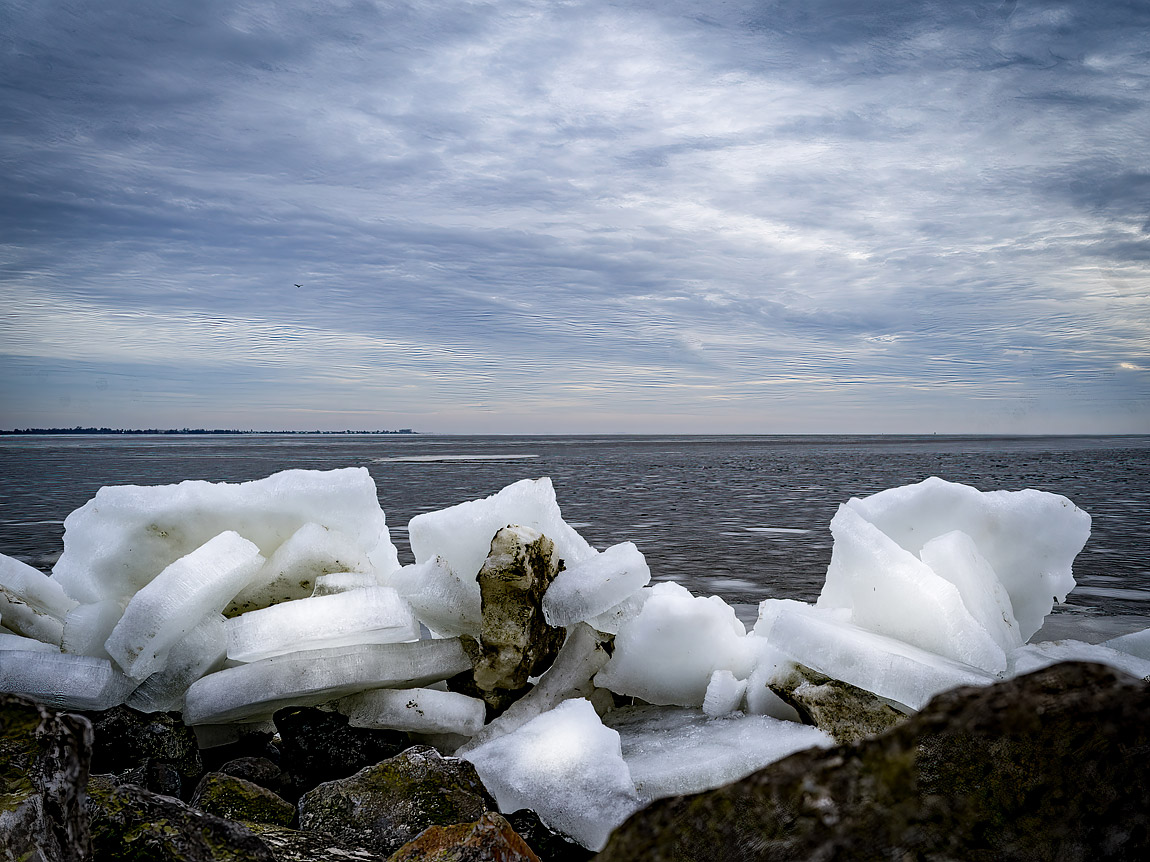When winter begins to loosen its grip and hints of thaw emerge, the quiet landscapes of Friesland undergo a remarkable transformation. Along the Afsluitdijk, a natural spectacle unfolds: shifting, breaking ice is caught in a dance dictated by wind and water. In this photograph, fragments of ice—crystalline and sharp—are driven relentlessly by strong gusts, piling up along the dike like an intricate, frozen mosaic.
The scene is mesmerizing yet fierce. Jagged shards rise in chaotic formations, some towering over one another, creating a glacial sculpture of raw energy. The texture and translucency of each fragment catch the pale winter light, casting a spectrum of soft blues and dazzling whites. This is nature at its most dynamic—poised between thaw and freeze, movement and stillness.
The wind’s howling breath is the invisible sculptor here, shaping a landscape that remains as fleeting as it is powerful. While many might associate winter with quiet dormancy, this moment tells another story—of ice unbound, gathering force, and finding new formations at the boundary where water meets land. For those standing along the dike, the experience is humbling: a reminder of the untamed and ever-changing character of the Dutch coast.
This phenomenon, known as kruiend ijs or drifting ice, has a storied past in Friesland’s culture and history. It represents both the beauty and challenges posed by living alongside water. As the ice splinters and collides, it whispers tales of winters gone by and transformations yet to come, reminding us of nature’s power to astonish and inspire, even as it shifts and melts away.


